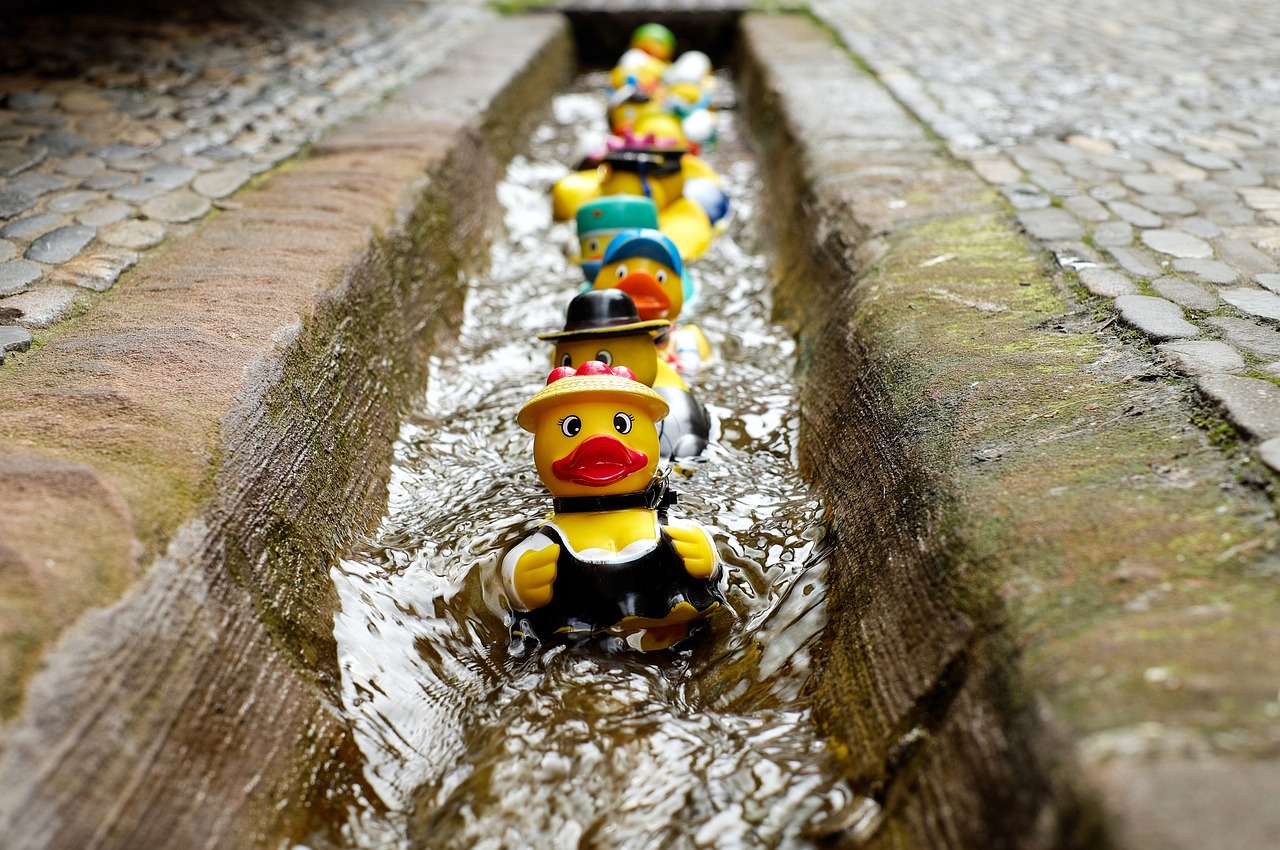The Benefits of Interactive Toys for Pet Health
Interactive toys are not just fun gadgets for your furry friends; they play a crucial role in enhancing their overall health and well-being. Imagine your pet, tail wagging, eyes sparkling with excitement as they engage with a toy that not only entertains but also challenges them physically and mentally. This article delves into how these toys contribute significantly to your pet's physical activity, mental stimulation, and social engagement, creating a happier and healthier companion.
One of the standout benefits of interactive toys is their ability to encourage pets to engage in physical play. Think of them as the personal trainers for your pets. By promoting regular exercise, these toys help prevent obesity, which is a growing concern for many pet owners. Regular activity is essential for maintaining a healthy weight, which in turn reduces the risk of various health issues such as diabetes, heart disease, and joint problems. Just like humans, pets need to move around to stay healthy. So, whether it's a toy that rolls, bounces, or makes noise, the more they play, the more they move!
Interactive toys are like brain games for pets. They challenge your furry pals mentally, which is vital in preventing boredom and its associated behavioral problems. Just as you might feel restless after a day of doing nothing, pets can feel the same way. Engaging their minds is crucial for their cognitive development and emotional health. A well-stimulated pet is a happy pet! By providing a variety of interactive toys, you can keep their minds sharp and their spirits high.
There’s a vast array of interactive toys available, each serving unique purposes in stimulating pets both mentally and physically. Here’s a quick overview of some popular types:
- Puzzle Feeders: These toys transform mealtime into a fun challenge, encouraging pets to solve problems to access their food. This not only promotes slow eating but also keeps their brains engaged.
- Electronic Toys: These often feature movement and sounds that capture pets' attention, encouraging them to chase and play. Mimicking prey, these toys enhance the play experience, making it more thrilling for your pet.
Interactive toys are not just for dogs; they cater to various types of pets, including cats and even small animals like rabbits and guinea pigs. Each pet can benefit from tailored interactive play experiences that suit their unique needs and preferences. For instance, while dogs may enjoy tug-of-war toys, cats might prefer feather wands or laser pointers. Understanding your pet’s personality can help you choose the right interactive toy for them.
Playing with interactive toys can foster stronger bonds between pets and their owners. Engaging in playtime enhances trust and companionship, leading to happier pets. Just think about it—how much closer do you feel to your pet after a fun play session? It’s these moments that strengthen your relationship and create lasting memories. Plus, it’s a great way to relieve stress for both you and your pet!
Interactive toys can also double as training tools. They reinforce positive behaviors and commands, making training sessions more enjoyable for your pet. This dual purpose enhances the pet-owner relationship while promoting good habits. Using toys as rewards during training can motivate your pet to learn faster. It’s like turning homework into a fun game!
Many pets experience anxiety or stress, whether from loud noises, changes in their environment, or even separation from their owners. Interactive toys can help alleviate these feelings by providing engaging playtime that diverts their attention. Just like a child might find comfort in a favorite toy during tough times, pets can experience a sense of comfort and security through interactive play. It’s a simple yet effective way to help your furry friend feel more at ease.
| Question | Answer |
|---|---|
| What types of pets can benefit from interactive toys? | Dogs, cats, and small animals like rabbits and guinea pigs can all benefit from interactive toys. |
| How do interactive toys help with training? | They can be used as rewards during training sessions, making learning fun and engaging for pets. |
| Can interactive toys reduce anxiety in pets? | Yes, they provide mental stimulation and comfort, helping to alleviate anxiety and stress. |

Enhancing Physical Activity
Interactive toys are a game-changer when it comes to encouraging our furry friends to get up and move. Just like humans, pets need regular exercise to stay healthy and vibrant. In a world where obesity is becoming a significant concern for pets, these toys serve as an essential tool to combat this issue. Imagine your pet chasing after a toy, their tail wagging excitedly, as they engage in a playful dance that not only entertains them but also keeps them fit. It’s a win-win!
Regular physical activity is crucial for pets, as it helps maintain a healthy weight and reduces the risk of various health problems such as diabetes, joint issues, and heart disease. With interactive toys, you can turn exercise into a fun game rather than a chore. For instance, a simple game of fetch with a toy that squeaks can keep your dog engaged for hours, while a cat might find joy in a feathered wand that encourages them to leap and pounce. These activities mimic their natural behaviors, which is vital for their physical and mental well-being.
Moreover, the right interactive toys can significantly enhance your pet's agility and coordination. When pets engage in physical play, they not only burn calories but also improve their muscle tone and overall strength. For example, toys that require jumping, running, or climbing can help develop their physical abilities. Think of it as a mini workout session that you can easily incorporate into your daily routine!
But how do you choose the right interactive toys for your pet? Here are some tips:
- Consider Your Pet's Size: Ensure that the toy is appropriate for your pet's size to avoid choking hazards.
- Assess Activity Level: Choose toys that match your pet's energy level. High-energy pets might enjoy more challenging toys.
- Safety First: Look for durable materials that can withstand rough play and are safe for your pet to chew on.
Incorporating interactive toys into your pet's daily routine can transform their playtime into a health-boosting activity. Just like humans benefit from regular exercise, our pets thrive on it too. The joy they experience while playing is a testament to the importance of physical activity in their lives. So, next time you’re looking to enhance your pet’s physical activity, consider investing in some interactive toys. Your furry friend will thank you with wagging tails and happy purrs!

Boosting Mental Stimulation
Interactive toys are not just about keeping pets physically active; they play a crucial role in . Imagine your pet’s brain as a sponge, soaking up information and experiences. Without proper stimulation, that sponge can become dry and unresponsive, leading to boredom and even behavioral issues. Just like humans, pets need challenges to thrive. Providing them with engaging toys can keep their minds sharp and prevent the dreaded "boredom blues."
Consider this: when your furry friend is faced with a puzzle feeder, they must figure out how to get to their food. This process not only slows down their eating but also turns mealtime into a fun and rewarding challenge. It's akin to solving a mystery, where each nibble is a clue leading them closer to their tasty reward. This kind of engagement is vital; it keeps their brains active and helps them develop problem-solving skills.
Moreover, interactive toys come in various forms, each designed to stimulate your pet's mind in different ways. For instance, electronic toys that move or make sounds can mimic the behavior of prey, triggering your pet's natural instincts to chase and play. This type of play not only entertains but also sharpens their reflexes and cognitive functions. The excitement of the chase can be compared to a thrilling game of hide and seek, where the thrill of the hunt keeps them on their toes.
In addition to preventing boredom, mental stimulation through interactive toys can significantly reduce anxiety. Pets that are mentally engaged are less likely to engage in destructive behaviors, such as chewing on furniture or excessive barking. Think of mental stimulation as a workout for your pet's brain; just as regular exercise keeps their body fit, challenging their minds keeps them emotionally and psychologically healthy.
As a pet owner, you might wonder how to choose the right interactive toys for your furry friend. Here are a few tips:
- Observe your pet's interests: Some pets may prefer toys that require problem-solving, while others might enjoy toys that involve movement.
- Consider your pet's age and energy level: Younger pets may benefit from more challenging toys, while older pets might require something simpler.
- Rotate toys regularly: Keeping things fresh can maintain your pet's interest and prevent them from losing enthusiasm.
In conclusion, investing in interactive toys is not just about fun and games; it's a commitment to your pet's overall well-being. By boosting their mental stimulation, you're helping them lead a happier, healthier life. So, the next time you’re shopping for your furry companion, remember that a well-stimulated mind is just as important as a fit body!
Types of Interactive Toys
When it comes to keeping our furry friends engaged and entertained, interactive toys are a game changer! These toys come in various forms, each designed to stimulate both the body and mind of our pets. From puzzle feeders that challenge their problem-solving skills to electronic gadgets that mimic the thrill of the hunt, there’s something for every pet out there. Let's dive into some of the most popular types of interactive toys and discover how they can enhance your pet's playtime.
First up, we have puzzle feeders. These ingenious devices are not just about feeding; they turn mealtime into an adventure! Imagine your pet having to work a little for their kibble. It’s like a treasure hunt where the prize is their favorite food! This not only slows down their eating, which is crucial for digestion, but also keeps their minds sharp as they figure out how to access the treats inside. Plus, it’s a fantastic way to prevent boredom, which can lead to destructive behaviors. You might be wondering, what types of puzzle feeders are available? Here’s a quick rundown:
| Type | Description |
|---|---|
| Interactive Bowls | Bowls with obstacles that make pets work for their food. |
| Snuffle Mats | Fabric mats where treats can be hidden for pets to sniff out. |
| Ball Feeders | Balls that dispense food as pets roll them around. |
Next, let’s talk about electronic toys. These high-tech toys are designed to keep your pet on their toes, literally! Many electronic toys come with features like movement, sounds, and lights that mimic the behavior of prey. Think of a small robotic mouse that scurries across the floor, enticing your cat to chase it. This not only provides a great workout but also satisfies their natural hunting instincts. Some electronic toys even have programmable settings, allowing you to control the level of difficulty and keep the playtime fresh and exciting!
Now, it’s not just dogs and cats that benefit from interactive toys. Small animals like rabbits, guinea pigs, and even birds can enjoy tailored interactive experiences. For instance, small animal tunnels and chew toys not only keep them physically active but also stimulate their curiosity. Birds can benefit from toys that require them to solve puzzles to get to their treats, keeping their minds sharp and their spirits high.
In conclusion, the variety of interactive toys available today means that there’s something for every pet, regardless of their age or activity level. By incorporating these toys into your pet's routine, you’re not just providing entertainment; you’re also enhancing their physical health, mental stimulation, and overall well-being. So, the next time you’re shopping for your furry friend, consider picking up an interactive toy that will keep them engaged and happy!
Puzzle Feeders
Puzzle feeders are more than just a trendy accessory for your pet; they are a fantastic way to transform mealtime into an engaging and stimulating experience. Imagine your furry friend, eagerly pawing at a cleverly designed toy, trying to figure out how to release those tasty kibble nuggets. This isn’t just playtime—it's a workout for their brain! By requiring pets to solve puzzles to access their food, these feeders promote slow eating, which is crucial for digestion and can help prevent issues like bloating.
Think about it: how often do our pets devour their meals in seconds? With puzzle feeders, mealtime becomes an adventure. They encourage problem-solving skills and can keep pets occupied for extended periods. This is especially beneficial for pets that tend to get bored easily or have high energy levels. The mental stimulation provided by these toys is akin to a puzzle for humans; it keeps the mind sharp and engaged. The result? A happier, healthier pet who is less likely to engage in destructive behaviors out of boredom.
Moreover, puzzle feeders come in various designs and difficulty levels, catering to pets of all ages and abilities. Some are simple enough for kittens or puppies, while others pose a challenge for seasoned pet pros. When selecting a puzzle feeder, consider your pet's size, skill level, and dietary needs. A good puzzle feeder should not only be fun but also safe and appropriate for your pet's unique requirements.
Here's a quick glance at the types of puzzle feeders available:
| Type of Puzzle Feeder | Features | Best For |
|---|---|---|
| Basic Puzzle Feeders | Simple designs with sliding compartments | Puppies and older pets |
| Advanced Puzzle Feeders | Multiple steps and challenges | Active and intelligent pets |
| Interactive Ball Feeders | Roll to dispense food | High-energy pets |
| DIY Puzzle Feeders | Homemade solutions using household items | Creative pet owners |
In conclusion, puzzle feeders are a brilliant investment in your pet's health and happiness. They not only make meals more exciting but also contribute to your pet's overall well-being by promoting physical activity and mental engagement. So, why not give your pet the gift of a puzzle feeder? After all, a happy pet is a healthy pet!
1. How do I introduce a puzzle feeder to my pet?
Start by showing your pet how it works. You can place some treats in the feeder and let them explore it without any pressure. Gradually increase the complexity as they become more comfortable.
2. Are puzzle feeders suitable for all pets?
Most puzzle feeders are designed for dogs and cats, but you can find options for small animals as well. Always consider your pet's size and skill level when choosing a feeder.
3. Can puzzle feeders help with weight management?
Absolutely! By slowing down their eating and encouraging physical activity, puzzle feeders can be a valuable tool in managing your pet's weight.
4. How often should I use a puzzle feeder?
You can use a puzzle feeder at every meal or as an occasional treat. The key is to keep it fun and engaging without overwhelming your pet.
Electronic Toys
When it comes to keeping our furry friends entertained, are a game changer! These innovative playthings are designed to engage pets in a way that traditional toys simply can't. Imagine a toy that moves, makes sounds, and even mimics the behavior of prey! This is not just play; it's an adventure that taps into your pet's natural instincts.
One of the most exciting features of electronic toys is their ability to capture attention. For instance, a toy that rolls unpredictably or emits sounds can send your pet into a playful frenzy. This kind of stimulation is crucial, as it encourages pets to chase, pounce, and engage in physical activity. Not only does this help keep them fit, but it also satisfies their hunting instincts, which are deeply ingrained in their behavior.
Moreover, electronic toys can be a great way to combat boredom. We all know that a bored pet can lead to destructive behaviors, right? By providing a toy that continuously moves or changes, you can keep your pet entertained for hours. This is particularly beneficial for indoor pets who might not have as many opportunities for exercise and exploration. Think of it as a mini workout session that you can enjoy right in your living room!
In addition to physical activity, electronic toys can also stimulate your pet's mental faculties. Many of these toys come equipped with various settings, allowing you to adjust the level of difficulty or engagement. For example, a toy might start off easy, but as your pet gets the hang of it, you can increase the challenge. This not only keeps them engaged but also promotes cognitive development. Just like us, pets thrive on challenges and the satisfaction of overcoming them!
To give you a better idea of the types of electronic toys available, here’s a quick overview:
| Type of Toy | Features | Benefits |
|---|---|---|
| Motion-Activated Toys | Moves when touched or approached | Encourages chasing and pouncing |
| Sound-Emitting Toys | Plays various sounds to attract attention | Stimulates auditory senses and curiosity |
| Remote-Controlled Toys | Can be controlled by the owner | Enhances interaction between pet and owner |
In conclusion, electronic toys are not just a passing trend; they are a valuable addition to your pet's playtime routine. By providing a combination of physical and mental stimulation, these toys can help ensure your pet remains healthy, happy, and engaged. So, if you're looking to spice up your pet's life, consider adding a few electronic toys to their collection!
- Are electronic toys safe for pets? - Yes, as long as they are made from pet-safe materials and are appropriate for your pet's size and play style.
- How often should I replace electronic toys? - It's a good idea to check for wear and tear regularly and replace them when they no longer function properly.
- Can electronic toys help with training? - Absolutely! Many electronic toys can be used to reinforce positive behaviors and commands.
Benefits for Different Pets
When it comes to interactive toys, it's not just dogs that can reap the rewards; cats, rabbits, and even hamsters can benefit immensely from these engaging playthings. Each type of pet has its own unique set of needs and preferences, and interactive toys can cater specifically to these. For instance, dogs thrive on physical activity and mental challenges, which can be easily provided through a variety of interactive toys. Think of it as a workout for their brains and bodies! Meanwhile, cats, with their natural hunting instincts, can find endless joy in toys that mimic prey-like movements.
Let’s break it down a bit further:
- Dogs: They are often the first to engage with interactive toys, as these toys can help channel their energy into constructive play. Puzzle toys that dispense treats not only keep them busy but also reward them for their problem-solving skills. This can help prevent destructive behaviors that often arise from boredom.
- Cats: These curious creatures can benefit from toys that stimulate their hunting instincts. Toys that move unpredictably or mimic the sounds of prey can keep a cat entertained for hours. Interactive laser pointers or feather wands can also provide the necessary exercise that indoor cats often lack.
- Small Animals: Pets like rabbits and guinea pigs enjoy toys that allow them to explore and chew. Interactive toys that encourage them to dig or forage can mimic their natural behaviors, providing both mental and physical stimulation.
Moreover, the benefits of interactive toys extend beyond just playtime. For example, they can also aid in weight management for pets that are prone to obesity. Regular engagement with interactive toys encourages pets to move more, helping them burn off excess calories. This is especially crucial for indoor pets that may not have as many opportunities for exercise. Additionally, the mental challenges posed by these toys can help prevent cognitive decline in older pets, keeping their minds sharp as they age.
In essence, interactive toys are not a one-size-fits-all solution; they can be tailored to meet the specific needs of different pets, enhancing their overall well-being. Whether it’s through physical exercise, mental stimulation, or simply providing a fun way to bond with their owners, interactive toys are a fantastic investment for pet health.
Q: How do I choose the right interactive toy for my pet?
A: Consider your pet's size, breed, and preferences. Look for toys that match their energy levels and interests. For example, high-energy dogs may benefit from toys that require physical activity, while more laid-back pets might enjoy puzzle toys.
Q: Can interactive toys help with behavioral issues?
A: Yes! Many behavioral issues stem from boredom or lack of stimulation. Interactive toys can keep your pet engaged, reducing destructive behaviors and anxiety.
Q: How often should I rotate my pet's toys?
A: To keep your pet interested, it's a good idea to rotate their toys every few weeks. This prevents them from getting bored with the same toys and keeps playtime exciting.

Social Interaction and Bonding
When it comes to our furry friends, the importance of social interaction cannot be overstated. Engaging with interactive toys not only provides entertainment but also serves as a fantastic avenue for building a stronger bond between pets and their owners. Imagine this: you and your pet are playing together with a colorful, engaging toy. As your pet chases, pounces, and interacts, you both share moments of laughter and joy. This shared experience fosters trust and companionship, creating a deeper emotional connection.
Interactive playtime is like a language of its own. Pets communicate through their actions, and when you join in on the fun, you’re speaking their language. For instance, when you toss a toy for your dog, and they bring it back, it’s not just a game; it’s a way for them to express their affection and loyalty. Similarly, cats love to stalk and pounce on toys, mimicking their natural hunting behavior while also enjoying your presence. This dynamic interaction is crucial for their emotional well-being.
Moreover, the benefits of interactive play extend beyond just the pet-owner relationship. It can also enhance social skills in pets themselves. For example, when dogs play with toys that require teamwork, they learn to cooperate and share, which can translate into better behavior around other dogs and people. In this way, interactive toys serve as a bridge to not only strengthen the bond between you and your pet but also to help them navigate their social world.
To illustrate the impact of interactive play on bonding, consider the following table:
| Type of Interaction | Benefits |
|---|---|
| Playtime with Toys | Enhances trust and companionship |
| Training with Toys | Reinforces positive behaviors |
| Group Play Sessions | Improves social skills |
In addition to strengthening bonds, interactive toys also provide a fantastic opportunity for training. When you incorporate toys into training sessions, you make learning fun and rewarding. For example, using a puzzle toy to reward your pet for following commands not only teaches them new skills but also reinforces your relationship as they associate you with positive experiences. It’s a win-win!
Finally, let’s not forget the role of interactive toys in reducing anxiety and stress. When pets feel secure and engaged, they’re less likely to exhibit destructive behaviors or signs of distress. By spending quality time together with these toys, you’re not just playing; you’re also providing a sense of comfort and security that pets crave. So next time you pull out an interactive toy, remember that you’re doing much more than just having fun—you’re nurturing a bond that can last a lifetime.
- What are the best types of interactive toys for my pet? It depends on your pet's preferences. Dogs may enjoy fetch toys, while cats might prefer feather wands or laser pointers.
- How often should I play with my pet using interactive toys? Aim for at least 15-30 minutes of playtime daily to keep your pet engaged and healthy.
- Can interactive toys help with behavioral issues? Yes, they can reduce boredom and anxiety, which often lead to behavioral problems.
Training Opportunities
Interactive toys are not just about fun and games; they also serve as fantastic tools for . Imagine this: you’re trying to teach your furry friend a new trick or command, and instead of the usual treats, you incorporate their favorite interactive toy. This approach can make the learning process not only more engaging but also incredibly effective. When pets associate learning with play, they’re more likely to participate actively and enjoy the experience.
These toys can reinforce positive behaviors in a way that feels rewarding for the pet. For instance, when a dog successfully solves a puzzle feeder, they not only get a tasty reward but also feel a sense of achievement. This builds their confidence and encourages them to try new things. Plus, the mental challenge keeps their minds sharp, which is essential for their overall well-being.
Moreover, interactive toys can be tailored to fit various training objectives. Whether you’re working on basic commands like “sit” or “stay,” or more advanced tricks, you can use toys to create a fun and stimulating environment. For example, you could use a toy that dispenses treats when your pet performs the desired action correctly. This method is particularly effective for pets that may be less motivated by traditional training methods. By integrating play into training, you’re not just teaching; you’re also strengthening the bond between you and your pet.
Let’s break down some of the training opportunities that interactive toys can provide:
- Reinforcing Commands: Use toys to reward your pet immediately after they follow a command. This helps them connect the dots between the behavior and the reward.
- Encouraging Problem-Solving: Many interactive toys require pets to think critically to access treats or toys, which fosters cognitive skills and problem-solving abilities.
- Promoting Patience: Toys that require time to figure out teach pets to be patient and persistent, valuable traits both in training and in daily life.
In summary, interactive toys are a powerful addition to any pet training regimen. They not only make the learning process enjoyable but also create a positive association with training sessions. When pets see training as a fun activity rather than a chore, they are more likely to engage and learn effectively. So, if you’re looking to enhance your training routine, consider incorporating interactive toys and watch as your pet flourishes!
1. How do interactive toys help with training?
Interactive toys make training more engaging and enjoyable for pets, helping them associate learning with fun. They can reinforce positive behaviors and encourage problem-solving skills.
2. Can all pets benefit from interactive toys?
Yes! Interactive toys are suitable for various pets, including dogs, cats, and small animals. Each type of pet can find a toy that meets their unique needs and preferences.
3. Are interactive toys safe for pets?
Most interactive toys are designed with pet safety in mind. However, it’s essential to choose toys that are appropriate for your pet's size and chewing habits to prevent any accidents.
4. How often should I use interactive toys for training?
You can incorporate interactive toys into your training sessions as often as you like. Just ensure that you balance playtime with structured training to keep your pet focused.
Reducing Anxiety and Stress
Just like humans, our furry friends can experience anxiety and stress. Whether it's due to loud noises, changes in their environment, or even separation from their owners, these feelings can lead to destructive behaviors and health issues. This is where interactive toys come into play, quite literally! By engaging pets in fun and stimulating activities, these toys can act as a wonderful distraction, helping to alleviate anxiety and stress levels.
Think of interactive toys as a comforting blanket for your pet's mind. When they are focused on solving puzzles or chasing electronic gadgets, their worries take a back seat. This kind of engagement not only keeps them occupied but also provides a sense of accomplishment. Imagine how satisfying it feels to finally solve a tricky puzzle—pets experience that same thrill when they conquer their toy challenges!
Moreover, interactive toys can create a calming environment. For instance, when a pet is busy playing with a puzzle feeder, they are less likely to react negatively to external stressors, such as loud thunder or unfamiliar visitors. The act of play releases endorphins, the feel-good hormones, which can significantly reduce feelings of anxiety. In fact, many pet owners have noticed that their pets become more relaxed after engaging with these toys.
It's also important to consider the variety of interactive toys available that cater specifically to reducing anxiety. For example:
- Soft Chew Toys: These can provide comfort and a sense of security, especially during stressful situations.
- Distraction Toys: Toys that require problem-solving can keep your pet's mind off their worries.
- Calming Toys: Some toys are designed with soothing sounds or textures that can help calm anxious pets.
In addition to providing entertainment, interactive toys can also serve as a training tool. By incorporating commands and tricks into playtime, you can reinforce positive behaviors, which can further reduce anxiety. When pets learn to associate playtime with positive reinforcement, it builds their confidence and reduces fear-related behaviors.
In summary, interactive toys are not just a source of fun; they are essential tools in managing your pet's mental health. By investing in these toys, you are investing in a happier, healthier, and more balanced life for your beloved companion.
Q: How do interactive toys help with my pet's anxiety?
A: Interactive toys engage your pet's mind and distract them from anxiety triggers, promoting a sense of accomplishment and reducing stress.
Q: What types of pets can benefit from interactive toys?
A: Dogs, cats, and even small animals like rabbits and guinea pigs can benefit from interactive toys tailored to their specific needs.
Q: How often should I introduce new interactive toys to my pet?
A: It's a good idea to rotate toys regularly to keep your pet engaged and prevent boredom. Introducing new toys every few weeks can maintain their interest.
Q: Can interactive toys help with my pet's behavior issues?
A: Yes! Many behavioral issues stem from boredom or anxiety. By keeping your pet mentally and physically stimulated, interactive toys can help mitigate these problems.
Frequently Asked Questions
- What are interactive toys?
Interactive toys are specially designed playthings that engage pets both physically and mentally. They can range from puzzle feeders that challenge pets to solve problems to electronic toys that encourage active play.
- How do interactive toys benefit my pet's health?
These toys promote physical activity, which helps prevent obesity and related health issues. They also provide mental stimulation, reducing boredom and the likelihood of behavioral problems.
- Can interactive toys help with my pet's anxiety?
Absolutely! Interactive toys can divert your pet's attention and provide comfort, helping to alleviate feelings of anxiety and stress. Engaging playtime can create a sense of security for your furry friend.
- Are there different types of interactive toys for different pets?
Yes! There are various types of interactive toys tailored for different pets, including dogs, cats, and small animals. Each type serves a unique purpose, ensuring that all pets can enjoy mental and physical stimulation.
- How can I use interactive toys for training my pet?
Interactive toys can be excellent training tools. They can reinforce positive behaviors and commands while making the training process fun for both you and your pet, enhancing your bond in the process.
- What are puzzle feeders and how do they work?
Puzzle feeders are interactive toys that make mealtime more engaging by requiring pets to solve challenges to access their food. This not only slows down their eating but also stimulates their minds.
- Do electronic toys really engage pets?
Yes! Electronic toys often feature movement and sounds that mimic prey, capturing your pet's attention and encouraging them to chase and play, which enhances their overall play experience.
- How often should I use interactive toys with my pet?
Using interactive toys regularly can be beneficial. Aim for daily play sessions to keep your pet physically active and mentally stimulated, but always tailor the frequency to your pet's needs and energy levels.
- Can interactive toys help with my pet's social skills?
Definitely! Playing with interactive toys, especially in the presence of their owners or other pets, can foster social interaction and bonding, leading to a happier and more well-adjusted pet.



















